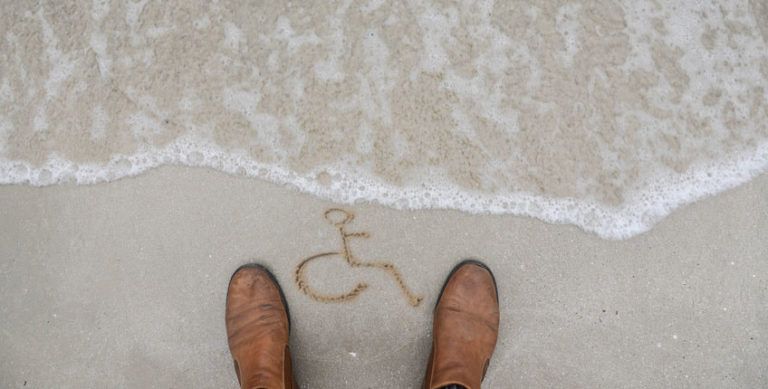 Bob Yant, the founder of a leading catheter manufacturing company, Cure Medical, has personally made a positive impact on the world of spinal cord injuries. Below, you’ll see why he’s such a strong advocate for finding a cure for paralysis and urinary retention.
Bob Yant, the founder of a leading catheter manufacturing company, Cure Medical, has personally made a positive impact on the world of spinal cord injuries. Below, you’ll see why he’s such a strong advocate for finding a cure for paralysis and urinary retention.
I graduated from the University of California Berkley in 1974 and started a business in San Francisco after graduation with a friend. We remodeled Victorian apartment buildings and sold them. We both received PhDs in sweat equity , even though I had a Bachelor’s degree in Sociology.

I discovered that the money I’d make with this degree wouldn’t be exactly what I wanted, so I learned a lot about the business world and developed a strong work ethic from my remodeling business.
I applied what I learned from my dad as well. He owned a small, local company selling equipment to electrical contractors. He also had an appliance store where he sold washers, dryers, refrigerators, televisions and more.
I learned about customer service and the essentials for running a business from him.
I was raised in northern California , but knew that there was something better out there for me. I had always loved the idea of life in southern California , so I decided to move there and work in the real estate business.
I thought it was a great idea because real estate in southern California was booming. I moved to Orange County in 1980 when the county was still developing and growing. I lived in Newport Beach , about 60 miles south of Los Angeles.
I had moved to the Balboa Peninsula area to be near one of my college friends, but discovered how charming it was. On one side of the peninsula is a sparkling ocean, and on the other side is one of the largest commercial harbors on the west coast. It was absolutely beautiful.
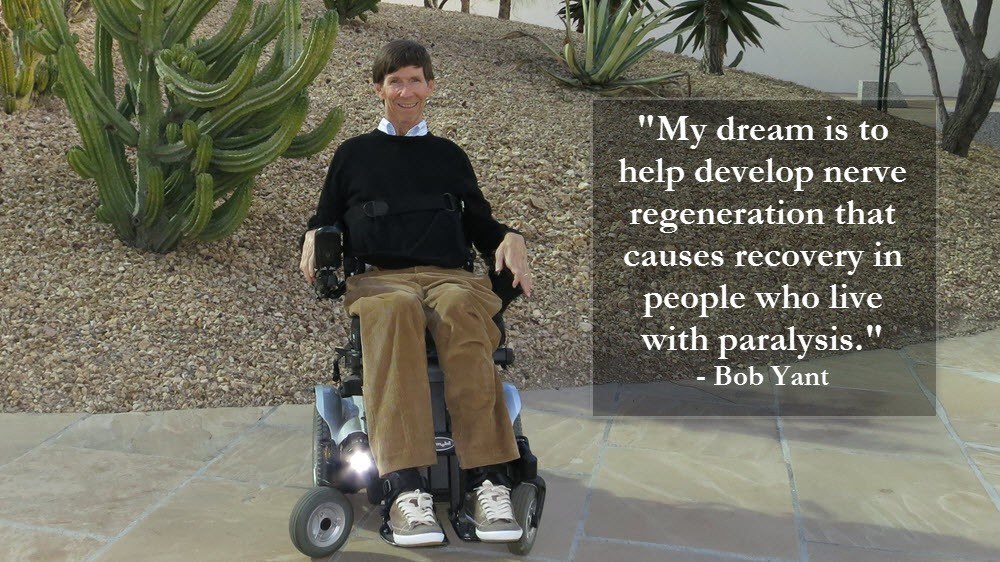
In 1982, I had a few friends come visit me. We were walking along the boardwalk, and I decided that I wanted to take a quick dip in the water. I dove in, thinking it was about six feet deep.
I didn’t realize was what used to be six feet of water was now only six inches.
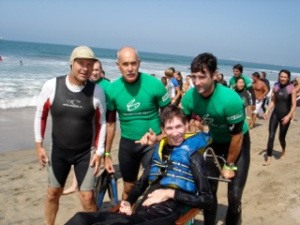
On that particular day, the ocean was like a lake. There were no waves–the water just lapped calmly against the shore.
I remember right after I dove, I heard a loud thud. I somehow ended up on my back, lifelessly floating underwater. I could see blurry images of the sun and sky staring back at me through the water. I think I was in shock.
I finally tried to move, but I couldn’t. I remember my arms felt very limp like little flippers , but I think that was just a sensory feeling because I could not move any part of my body.
Thoughts were racing through my head—“I could drown. I am underwater and I cannot move.”
Cowboy Boots Appeared to save Bob’s Life
Suddenly, I heard one of my friends calling my name. I remember I saw the cowboy boots he was wearing coming straight toward me under the water. All I could think about was, “What is happening to me?”
The calm lapping of the waves had caused very shallow sandbars that were not visible. That summer, for about a 30-mile stretch of beach, more people suffered broken necks than ever before.
I couldn’t believe one of those people was me.
Video: Bob Yant Shares Why He Pursues a Cure
[youtube http://www.youtube.com/watch?v=IcV_chMvDRc&w=420&h=315]Bob Yant describes His Road to Recovery
I was saved from drowning, but I knew I was badly hurt. I remember lying on the beach, lifeless, when the paramedics came. They put me into an ambulance and I was rushed to the hospital. I did not feel pain, but I couldn’t feel my body, and I couldn’t move. One thing that really scared me at the hospital was when the neurologist came to see me in the emergency room and said, “You and I are going to get to know each other pretty well.”
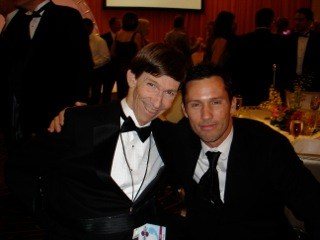
That statement alone showed me that my injury would not be short term. I hurt myself pretty bad—all because of one dive into the ocean.
When I woke up the next morning, I was in the middle of a living nightmare. I was in the Intensive Care Unit (ICU). I heard things like, “Your family is on the way.” and “The guy who pulled you out of the water made sure you were okay before he left.”
This wasn’t a nightmare—it was real life.
Doctors told me that I had broke my neck at C5 and that I would most likely have permanent paralysis. The break in my spinal cord occurred in the middle of my neck. I could move my arms and my right wrist, but I had no finger movement at all.
Bob Yant Shares the Four Stages of Acceptance
I was devastated when I found out how little function I had left. I learned later that anyone who has any type of loss goes through four stages of accepting their situation.
The first stage is denial.
When friends came to the hospital to visit me, I would tell them, “Don’t worry; I’ll be walking out of this hospital.” A few weeks after the denial stage when I realized that I would be like this for a long time–possibly for life, then I moved into the second stage of anger.
My dad tried to do what he could to satisfy my anger, but it actually caused him to get angry. I constantly asked the question, “Why me?” I’m sure I wasn’t the only one who asked that question after a traumatic injury.
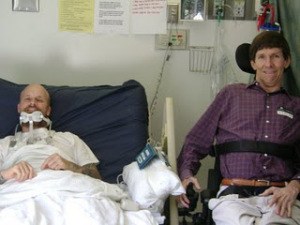
Not everyone with spinal cord injuries will have same depth of depression that I did.
Everyone handles his or her depression in a different way, and I’ve learned this from talking with people from all over the world who have spinal cord injuries.
Looking back, I think the anger stage is better than what follows.
The third stage is depression, which is the scariest. I was suicidal.
It is not uncommon for people in the early stages of spinal cord injury to feel this way. I knew people who actually committed suicide. I was in the worst, deepest and darkest hole of depression in once I was transferred to a third hospital.
I lost the motivation to be myself and to do anything. I didn’t have the desire to live. When I mentioned suicide to the doctors and nurses in the hospital, they took it very seriously and reacted quickly. They put me on Elavil, to alleviate my depression and suicidal thoughts.

Everyone Handles SCI Differently
Recently, I talked with a young man who only had been injured for a month. This 30 year-old man was extremely positive about his injury—he had a wife and children. He knew from the moment he was injured that he was paralyzed and that he may have to do certain things differently.
He didn’t have the sense of loss that I had. This young man went back to work and school within a month after his injury.
Everyone deals with loss in a different way, whether it’s the loss of a loved one or the loss of certain body functions.
In the 1980s, many spinal cord injury patients stayed at the hospital for six months, as I did, but today, because of the healthcare system we have, patients are discharged within two months.
This is very unfortunate because not everyone can recover physically and emotionally in such a short time.
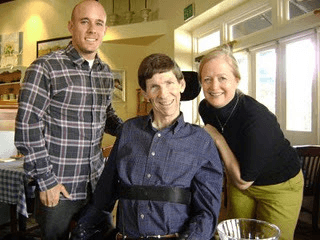
In the first six months, the hospital staff not only taught me about living with my injury, but they also trained my family on how to help me transfer from one location to another.
They also monitored my physical condition, taught me how to get in and out of a car, take a shower, and feed myself. They even made a splint for my left arm and taught me how to type.
I had thorough physical and occupational therapy. I had no idea what my life would be like when after being in the hospital. A psychologist told me that after I left the hospital, “You’ll lead a fairly normal life.”
Now, 30 years later, I can see that he was absolutely right.
I have an amazing family, a wonderful daughter, a successful career and I know what a fairly normal life is.
Learn more about Bob Yant’s mission for Cure Medical here.
Join the Cure Nation: United In Pursuit of a Cure
If you agree on the importance of pursuing a cure for paralysis and urinary retention, an easy way to be part of the team that is fighting for these medical advancements is to join the Cure Nation!
Every time you use a Cure catheter, you’ll be happy to know that 10% of the net income generated from your choice is donated to medical research programs that are working toward this goal. Learn more about the medical research supported by Cure Medical here.
To meet more of the friendly folks who are part of the Cure Nation, visit our Cure Advocates page or follow us on Facebook!
 To request free samples of the Cure Catheter® or any Cure Medical catheter, contact your local distributor of quality healthcare products, or click here.
To request free samples of the Cure Catheter® or any Cure Medical catheter, contact your local distributor of quality healthcare products, or click here.
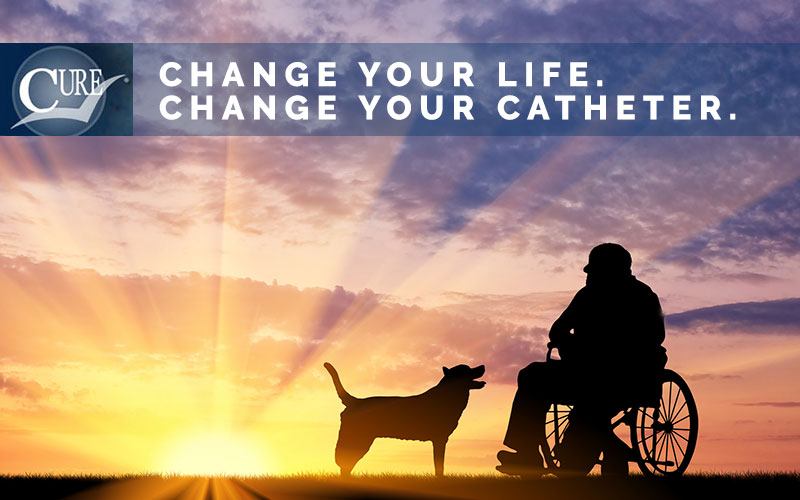
About Cure Medical
Established by Cure founder Bob Yant, the Cure Commitment is unsurpassed in the industry. Only Cure Medical has committed to donating 10% of net profits to SCI scientific research. Cure Medical catheters are not made with DEHP, BPA or natural rubber latex. Simply by using new Cure Catheters® or Cure Catheter® Closed Systems for routine intermittent catheterization, you take part in the sustained pursuit of a cure. Learn more at www.curemedical.com.
Enjoy Our Free Resources & Articles
 CURE NATION is designed with you in mind, to offer assistance and education when you need it through a personal support program.
CURE NATION is designed with you in mind, to offer assistance and education when you need it through a personal support program.
All of the information you find below and on our related social media pages is meant to guide you to places, topics and, resources that enhance your life, while also connecting you with a growing group of friends.
- Sign up for our free, CURE NATION e-newsletter to have our latest stories delivered directly to you, once a month.
- Get our FREE LIFESTYLE + TRAVEL BOOKS here.
- Have an idea you’d like to share? Let us know.
- Be sure to take a minute to meet our Cure Advocates too.

